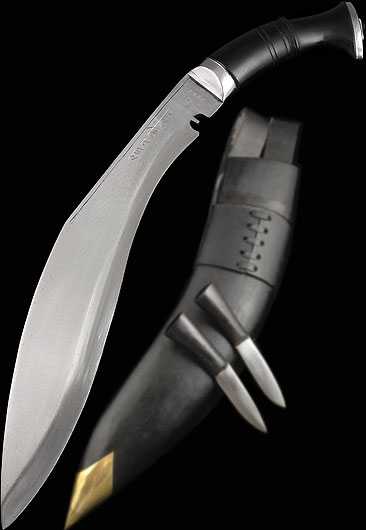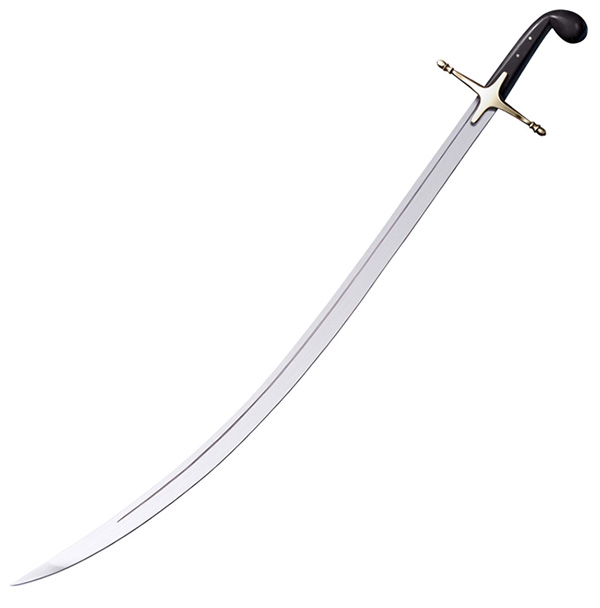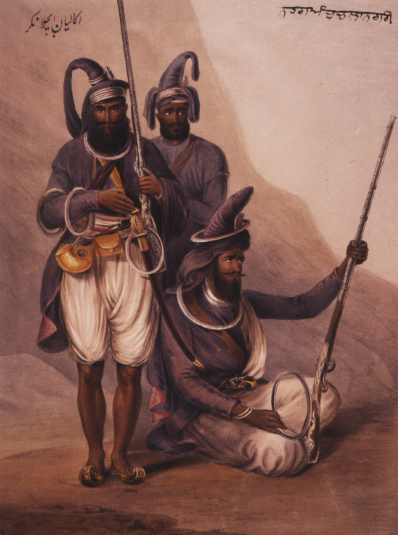By C. Jordan
In this age when we think of weapons, we tend to think of aircraft, electronic guidance systems, bombs and missiles. Sophisticated star wars systems may come to mind or huge warships and aircraft carriers or even chemical or nuclear weapons.
Of course that has not always been the case.
From man’s earliest days the blade has been the basic form of weapon whether for hunting, defence or warfare. For close combat and ceremonial occasions it is still in use today: the dress sword of the mounted officer or the bayonet of the infantry. If you are lucky enough to be Knighted you may even get a tap on the shoulders by the British Queen with a ceremonial sword.
I would like to make it clear at this point, that this article takes no stance on the use of weaponry.
My own beliefs and convictions are not included here. This is a look at some of the non standard, more interesting and curious forms that blades have taken, with historical, geographic and cultural differences. I use the term blade because some of the forms shown cannot be described as knives or swords.
-
The Kukri
Some readers may be surprised to find that the image shown is actually modern British army issue. It is issued to one of the most feared units in the British army: the Gurkhas.
It is their weapon of choice in close combat, rather than the bayonet.
The story of the Gurkhas is a long and historically complicated one.
Succinctly: Gurkhas hail from Nepal which was part of India. In its Empire building days, Britain made India one of its colonies. The Gurkhas were seen as brave and heroic fighters who were recruited into the colonial Indian army as a “Martial Race”, a term which meant that they were not classed as mercenaries.
With the independence of India in 1947 four regiments became part of the British army. Prior to this they have fought in both World Wars and latterly were part of the forces that in the 1980’s defeated the Argentine army in the Falklands and also served in the Middle East.
The Kukri shown above is the standard army issue with karda and chakmak.
Traditionally the blade is 12-15 inches (30-38cm) long. The karda is a small accessory blade used for many tasks. The chakmak is unsharpened and is used to burnish the blade. It can also be used to start a fire with flint.
-
The Shamshir
The Shamshir is a sabre that is part of the scimitar group of swords.
Originating in Persia in the 16th century, it was the weapon of the Persian cavalry.
Somewhat unwieldy and inaccurate in a thrusting stabbing motion, its strength was in its slashing ability. The curved blade which made it unwieldy for thrusting made it dynamic for a downward slashing movement, normally against un-armoured foot opponents. One writer said that “bright shamshirs which fell on the head cleft men to the waist.”
-
The Khanda
The Khanda is a straight, heavy double edged Indian sword
This example clearly shows that the weapon is broader towards the tip than half way down the blade, complete with spike at the base of the handle. Because of its size and weight, this again was a weapon that was more useful for slashing and hacking rather than a stabbing movement.
It is mainly associated with the Sikhs, Marathas and other clans of the Kshatriya warrior class of India. It is also used in Sikh martial arts.
-
The Quoit
The quoit, surely this is a ring of rope used by passengers on luxury liners in days gone by in deck games, or perhaps the ring used in Hoopla on the funfair?
These pastimes of idling away time do not have much to do with reality.
The reality was that the quoit was a solid razor sharp ring of thin steel used by the Sikhs of India. (The example above is actually inlaid with gold
The quoit also known as a Chakram measured anything between 5-12 inches (13-30cm)
This weapon was thrown at the enemy. It was released either vertically in an underarm throw to fall under it own weight on the heads of opponents, or would be twirled around the index finger raised above the head and released.
It is said that in the right hands it could kill a man at 80 paces.
-
The Kora
A somewhat rare and fierce weapon, the Kora served as part axe and part sword.
This Indo/Nepal weapon was used for fighting and for sacrifice.
-
The Tang
A tang on a knife or sword is that part that will be enclosed by the handle.
This is probably how the weapon got its name. At first glance it appears as if the pointed part is like the tang waiting to have the handle fitted with the parts to right and left being hand guards.
The tang shown is actually 58cm long and 65 cm wide (23 and 26 inches)
This is actually a “pole arm”. A shaft fits into the opening in the bottom left.
It derives from China in the 19th century and consists of a 13cm (5 inch) spear type point with two 33cm (13 inch) blades either side.
This type of weapon was used by police forces or others who needed to keep crowds in order.
-
The Ayda Katti
The Ayda Katti is the national sword of the Coorg of Malabar, the South West coastal area of India.
It is one of the rarest swords in the Indian arsenal and of a very peculiar shape. It is single edged and is reminiscent of a scythe or other farming agricultural tool. However it is a real weapon and a deadly one in experienced hands.
The blade of this one is 38cm (15 inches) long and 10cm (4 inches) wide at its widest point with a massive steel bolster.
-
The Katar
The Katar, shown in the introduction, is a short punching sword from India. The hand fitted into the grip so that the blade was above the knuckles. It was a weapon used by the Rajput, referred to as “the most valiant warriors of the Indian sub continent.”
Used in close combat the blades were said to be able to punch through armour.
The fascinating example above incorporates two small pistols alongside the hand grip. this was used by the Maharatti cavalry. An earlier example of this pistol weapon did not have triggers but was fired by squeezing together the two “swallow tails” at the back, which was attached to the firing mechanism.
-
The Badek
The Badek (or Badik) is a knife from Java, Indonesia. It is characterized by its single edge blade with straight back and up-curving edge, and the pistol grip shape handle.
It measures from 20 to 40 cm in length (8-16 inches)
It sometimes features in Silat Melayu – martial arts from the countries around the Malay Archipelago.
-
The Kris
The Kris or Keris is a dagger that originates from Indonesia and Malaysia.
The Glenbow museum describes them “Kris knives with decorative scabbards are used throughout Indonesia as weapons and ritual objects, and are part of men’s ceremonial attire. The wavy iron blade of the knife represents a snake in movement and is thought to have power to protect its owner.”
In the past disputes were settled with this double edged dagger. The more people it killed the more valuable it became.
There was a superstition that it should not be drawn in the presence of the person who gave it to the owner.
The kris was also supposed to have a spirit that could be good or bad. The same weapon may be bad for one person but good for another.










